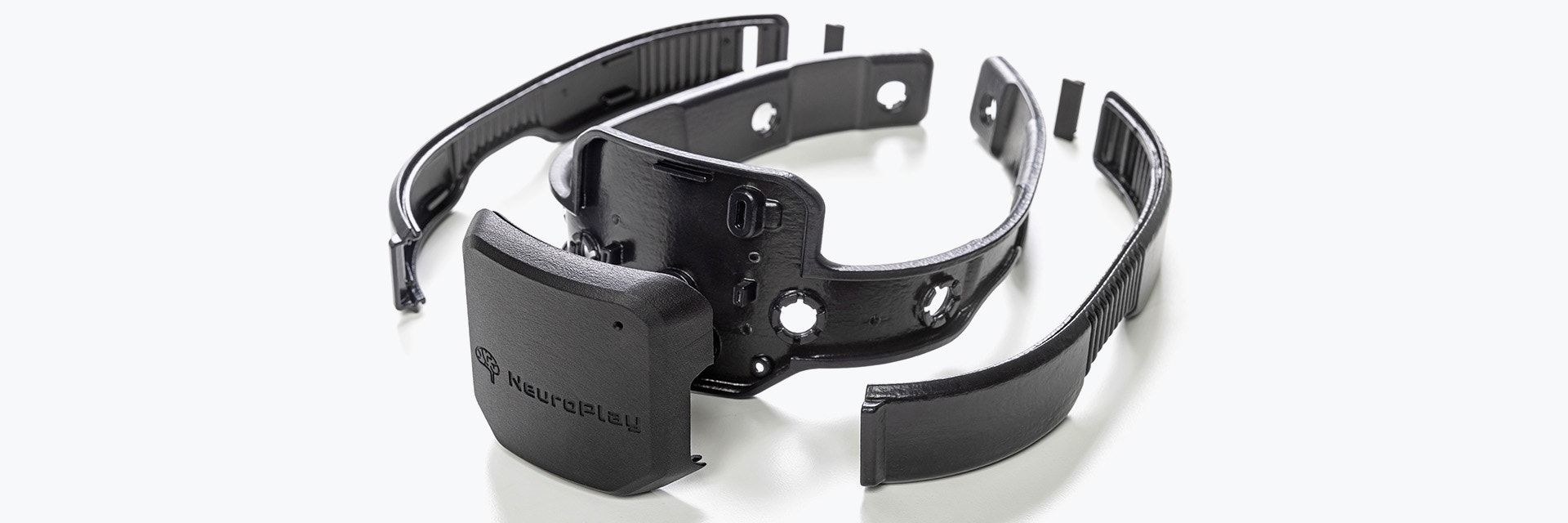CASE STUDY
Small Series, Big Impact: Mindsailors Transforms an EEG Headset with Multi Jet Fusion
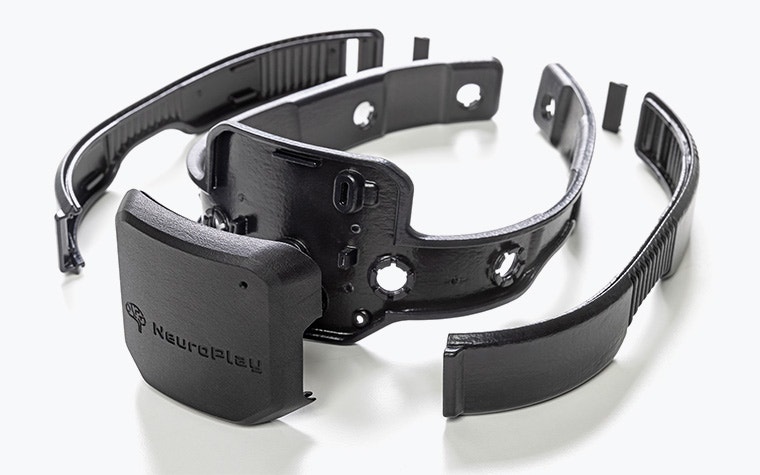
Medtech devices like the NeuroPlay headset are ideal applications for 3D printing — especially when designed by experts like Mindsailors. Here’s how they took advantage of 3D printing’s design freedom to deliver a strong, comfortable, flexible, and compliant EEG headband.
As a proven design agency, Mindsailors is well-versed in bringing a project from the screen to reality. What began as a two-person team is now a multi-talented group boasting a diverse range of skills, from industrial design to engineering and electronics. Their customers demand a one-stop shop where they can share ideas and work together for as long as possible throughout the development process.
Today, the team offers exactly that, helping its clients with everything from design to testing and certification, including for medical devices like the NeuroPlay headset: an EEG-biofeedback sensor for monitoring neurological activity. While Mindsailors has plenty of experience in the medtech field, this particular project required a unique approach to overcome unique challenges.
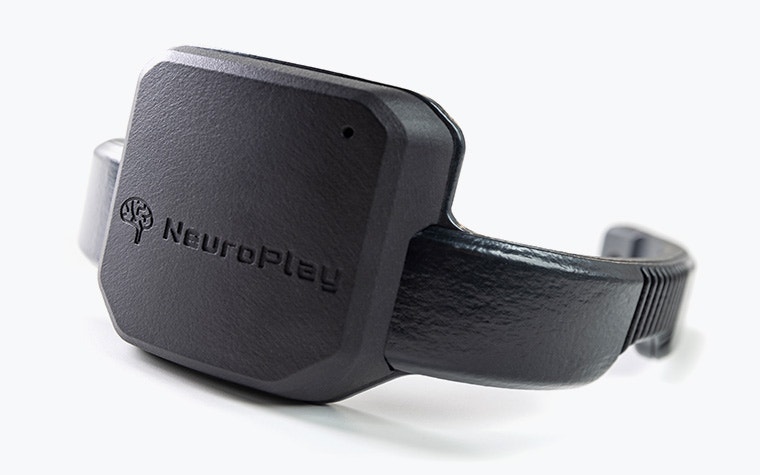

The challenge
Redesign an EEG headset for comfort, strength, and flexibility
“Straight from the beginning, we knew that it was meant to be manufactured in a small series,” says Mikołaj Wiewióra, Senior Designer at Mindsailors. “We knew we’d need to begin by researching the technology we’d use because injection molding and other industrial techniques just wouldn’t be economically viable.”
A second challenge came in the form of the design itself. Having already worked with a research institute to develop the headset’s electronics and a rudimentary model, NeuroPlay approached Mindsailors with a design in hand. It worked, but there was a lot of room for improvement.
“It wasn’t very user-friendly: hard to wear, stiff, and uncomfortable. That’s hard to avoid because the electrodes need to have good contact with the patient’s head, but we did our best to minimize that.”
Mikołaj and his team began the process by researching their four key factors:
- Suitability for low-volume production
- Patient safety and compliance with cytotoxicity certifications
- Ensuring flexibility, adaptability, and comfort
- And making it strong enough to protect fragile electronics
The solution
Small series production with Multi Jet Fusion at Materialise
To settle on the final model, the Mindsailors team proposed five solutions before the project really moved forward. Each accounted for cost, time, advantages, and disadvantages, ensuring the two parties could make an informed decision.
“I think the best method is to propose different scenarios, where each one is a valid solution resulting in a better product than they had before. One scenario was a fully injection molded part that would be very advanced but also the most expensive and time-consuming. Another was just a slight 3D printing-enabled redesign of the headband with a little touch on the electronics and electrodes. Our final model strikes the perfect balance between the two. It’s the one we pushed for, and we met in the middle,” recalls Mikołaj.
“In the end, the answers were quite straightforward. We found a manufacturer who delivered highly conductive but soft and dry electrodes, which was our holy grail of electrodes because they allowed us to make a more comfortable device. But when choosing the technology for the enclosure, it was all about standards and material compliance — in this case, the materials were the perfect match with HP Multi Jet Fusion.”
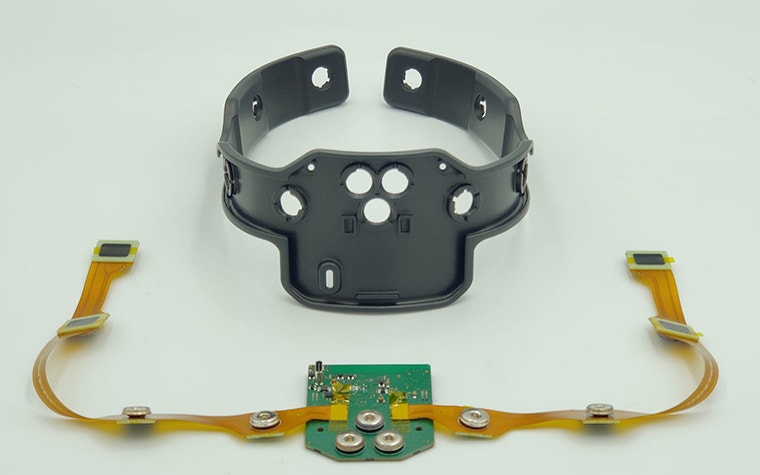

Beyond compliance, the technology’s design freedom allowed the team to tackle their remaining challenges: durability and elasticity. By thinning the walls in some areas, they could ensure the headband was flexible and adaptable, making it a good fit for all head sizes and shapes while still protecting the fragile electronics housed within.
“Printing the same material with varying wall thicknesses and shapes in different areas is pretty difficult with injection molding or any other mass manufacturing technique, but it’s doable with 3D printing.”
Having settled on the technology, material, and design, Mikołaj and his team turned to Materialise for low-volume series production — continuing a relationship that has existed since before the acquisition of e-Prototypy in 2014.
“When we were thinking of additive manufacturing, we knew that Materialise was the only company capable of the repeatability we needed.”
The result
A strong, flexible EEG-biofeedback headband
“When we were thinking of additive manufacturing, we knew that Materialise was the only company capable of the repeatability we needed,” he tells us. “And as it was our first project using additive manufacturing for more than early models, we learned a lot of hard lessons. Now we know it’s like any other manufacturing process: you need a way to verify every part you get. Now we have that; I know that we could order 200, and everything will be fine.”
Following a period of prototyping, during which the Mindsailors team determined a checklist and series of standards, the project moved into production. What began with a small series of 50 parts has now been clinically tested on over 200 patients with great success. The headband looks great, fits well, and is more comfortable than the original design — thanks, in part, to Mikołaj’s insistence.
“We decided to take some risks with the wall thickness — it’s below the minimum recommendation for Multi Jet Fusion, which could have caused some problems,” recalls Mikołaj. “But we needed it to be that thin to ensure the flexibility. Luckily, it turned out to be the right decision because the surrounding geometry helped keep the wall thin yet solid.”
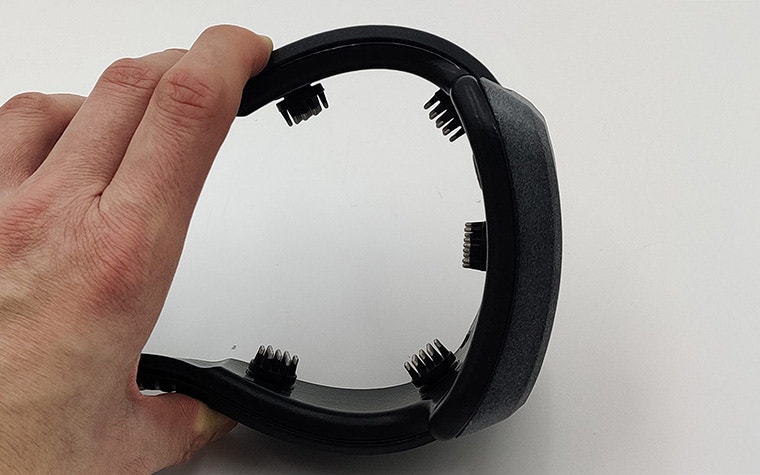

A project to be proud of
With all said and done and the Mindsailors team adding a healthy dose of experience with additive manufacturing to their resumé, how does Mikołaj feel about the project?
“I am pretty proud,” he admits. “But, of course, as a perfectionist, I’d like this project to be even better. I think that’s a good approach — at some point, you need to stop and deliver and then be open to feedback. After all, a product on the market is the best product in the world. If it never leaves the computer screen, it’s not a product at all.”
Share on:
This case study in a few words
Medtech
- Multi Jet Fusion
- Series production
- Design freedom
- Compliance of materials (biocompatibility)
- Low quantity orders
